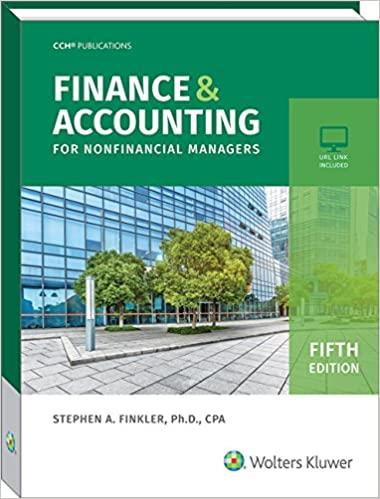Answered step by step
Verified Expert Solution
Question
1 Approved Answer
Q.2. Balance Sheet Cash Accounts receivable Inventories Total current assets Fixed assets, net Total assets Accounts payable Accruals Bank loan FY20 150,000 120,000 350,000 620,000

Step by Step Solution
There are 3 Steps involved in it
Step: 1

Get Instant Access to Expert-Tailored Solutions
See step-by-step solutions with expert insights and AI powered tools for academic success
Step: 2

Step: 3

Ace Your Homework with AI
Get the answers you need in no time with our AI-driven, step-by-step assistance
Get Started


